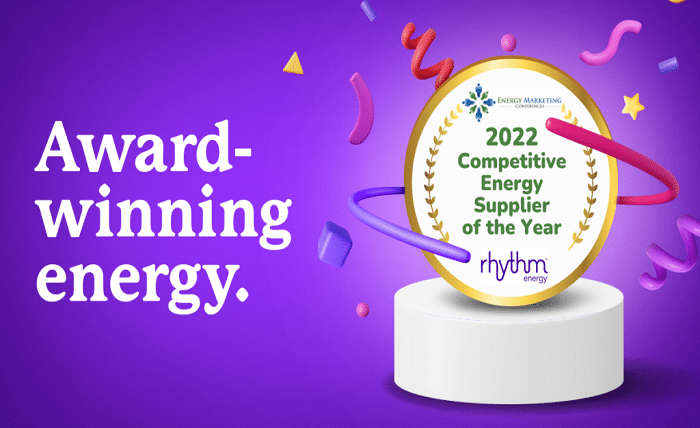
Rhythm energy is a concept that refers to the natural cycles and patterns that govern life on Earth. From the circadian rhythms that control our sleep-wake cycles to the rhythmic beat of our heart, rhythm energy plays a crucial role in maintaining balance and harmony in our bodies and environment. In 2022, more individuals are becoming aware of the importance of understanding rhythm energy and how it can influence various aspects of life, including physical health, emotional well-being, productivity, and overall happiness. In this blog post, we will explore the different types of rhythm energy and provide insights on how to harness its power for a more balanced and energized life.
The Science Behind Rhythm Energy
Understanding rhythm energy requires delving into the scientific principles that define these natural cycles. At its core, rhythm energy is driven by biological processes, most notably circadian rhythms. These rhythms are regulated by an internal biological clock located in the brain that responds to environmental cues, such as light and temperature. This internal clock influences many aspects of human physiology, including hormone production, metabolism, and energy levels.
Rhythm energy can also be influenced by external factors, such as music and movement, which can have profound effects on mood and energy levels. Scientific studies have shown that listening to rhythmic music can synchronize brainwaves and create a sense of harmony, boosting rhythm energy and mental clarity.
How Rhythm Energy Affects Physical Health
Physical health is deeply connected to rhythm energy. When our internal rhythms are in sync with natural cycles, we experience optimal health. For instance, disruptions in circadian rhythms can lead to sleep disorders, obesity, and even chronic diseases like diabetes. This is why maintaining a consistent sleep schedule is crucial for preserving rhythm energy and overall health.
Rhythm energy also impacts our exercise routines. The human body responds positively to rhythmic movement, such as walking, running, and dancing, which can elevate heart rate, improve cardiovascular health, and boost energy. By understanding the principles of rhythm energy, individuals can tailor their workout routines to maximize physical performance and well-being.
Emotional Well-being and Rhythm Energy
The connection between rhythm energy and emotional well-being is undeniable. Our emotions often follow a cyclical pattern, influenced by both internal and external rhythms. For instance, exposure to natural light in the morning can elevate mood and increase rhythm energy, while spending too much time in artificial lighting can lead to feelings of lethargy and depression.
Music therapy is a growing field that leverages the power of rhythm energy to enhance emotional well-being. Listening to certain types of music, especially those with calming or uplifting rhythms, can have a direct impact on the brain’s reward centers, releasing feel-good neurotransmitters such as dopamine and serotonin. Rhythm energy, when properly harnessed, can be a powerful tool for managing stress, anxiety, and depression.
The Role of Rhythm Energy in Productivity
Rhythm energy also plays a significant role in our productivity levels. Our energy, focus, and cognitive abilities tend to peak at certain times of the day, following the natural ebb and flow of rhythm energy. The key to maximizing productivity is to align work tasks with these energy peaks.
For example, many people experience a burst of rhythm energy in the morning, making it an ideal time for completing tasks that require concentration and mental effort. By contrast, the afternoon is often characterized by a dip in rhythm energy, making it a better time for less demanding tasks or creative work. By understanding one’s own rhythm energy patterns, it is possible to create a more effective and fulfilling daily routine.
Enhancing Rhythm Energy Through Lifestyle Choices
Enhancing rhythm energy can be achieved through conscious lifestyle choices. One of the most important factors is maintaining a regular sleep-wake cycle, which supports the body’s natural circadian rhythm. Going to bed and waking up at the same time every day can improve sleep quality and increase rhythm energy levels throughout the day.
Nutrition also plays a key role in sustaining rhythm energy. Eating meals at consistent times and focusing on a balanced diet that includes whole foods, proteins, and healthy fats can provide the body with the necessary fuel to maintain steady rhythm energy levels. Regular exercise, as mentioned earlier, is another way to enhance rhythm energy, especially when the exercise incorporates rhythmic movements like dancing, yoga, or running.
The Impact of External Rhythms on Rhythm Energy
External rhythms, such as the natural cycles of the seasons and the movement of celestial bodies, also have a profound impact on rhythm energy. Many cultures around the world recognize the importance of aligning with these external rhythms to maintain balance and harmony. For example, seasonal changes affect rhythm energy in various ways—longer daylight hours in the summer can increase energy and motivation, while shorter days in the winter may result in lower rhythm energy levels.
Incorporating these natural rhythms into daily life can help enhance rhythm energy. Spending time outdoors, engaging in mindfulness practices that connect with nature, and being aware of seasonal energy shifts can promote a healthier and more balanced life.
How to Harness the Power of Rhythm Energy
Harnessing the power of rhythm energy involves becoming more attuned to your body’s natural rhythms and making lifestyle choices that support them. Start by paying attention to your daily energy patterns—note when you feel most alert and focused, and when you experience dips in energy. Use this awareness to structure your day around your natural rhythm energy.
Another way to harness rhythm energy is through mindfulness and meditation. These practices encourage a deeper connection with internal rhythms and promote a sense of inner balance. Additionally, incorporating rhythmic activities like dancing, drumming, or yoga into your daily routine can enhance rhythm energy and improve both physical and emotional well-being.
Conclusion
Rhythm energy is an integral part of our daily lives, influencing everything from our physical health to our emotional well-being and productivity. By understanding and harnessing the power of rhythm energy, we can create a more balanced, energized, and fulfilling life. From aligning with natural circadian rhythms to incorporating rhythmic movement and music into our routines, there are many ways to enhance rhythm energy and improve overall well-being.
By making conscious lifestyle choices that support rhythm energy, individuals can experience increased vitality, reduced stress, and a greater sense of harmony in their everyday lives.
FAQs
1. What is rhythm energy?
Rhythm energy refers to the natural cycles and patterns, such as circadian rhythms, that regulate our physical, emotional, and mental well-being. It is the energy we derive from syncing with these rhythms.
2. How does rhythm energy affect sleep?
Rhythm energy plays a crucial role in regulating sleep by aligning with circadian rhythms. Maintaining a consistent sleep-wake cycle supports better sleep quality and rhythm energy.
3. Can music enhance rhythm energy?
Yes, music with rhythmic patterns can enhance rhythm energy by synchronizing brainwaves and influencing mood. Music therapy is one way to boost emotional and mental rhythm energy.
4. How does rhythm energy impact productivity?
Rhythm energy affects productivity by creating natural energy peaks and dips throughout the day. Aligning tasks with these energy patterns can boost focus and efficiency.
5. How can I increase my rhythm energy naturally?
To increase rhythm energy, maintain a consistent sleep-wake cycle, engage in regular exercise, eat balanced meals, and incorporate mindfulness practices into your routine.




